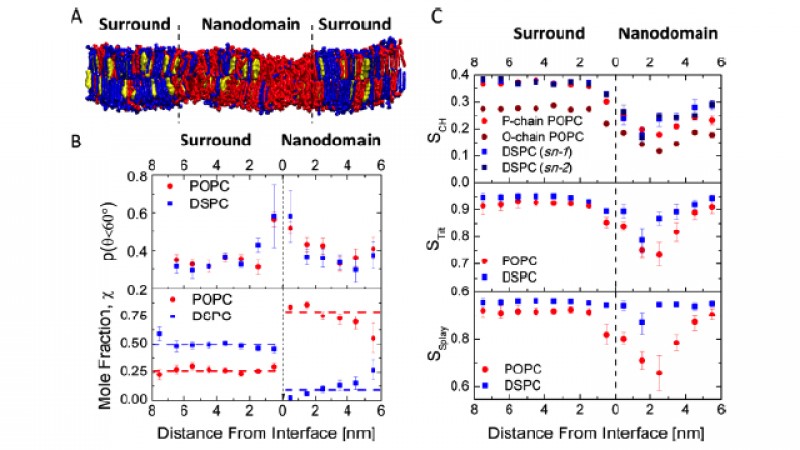The existence and role of lateral lipid organization in biological membranes has been studied and contested for more than 30 years. At the core of this debate is the lipid raft hypothesis, which proposes rafts as scalable compartments in biological membranes, providing appropriate physical environments to resident membrane proteins. This implies that lateral lipid organization is connected to a range of biological functions, such as protein co-localization, membrane trafficking, and cell signaling, to name a few. Recently, using neutron spin echo and contrast matching approaches we were able to measure the bending moduli of nanoscopic lipid domains in 60 nm diameter vesicles, whose lipid composition mimicked the mammalian plasma membrane outer leaflet. Importantly, the bending modulus of the nanoscopic domains differs from that of the continuous phase
surrounding them. From additional neutron measurements and all-atom simulations, we were also able to determine that nanoscopic domains are in-register across the bilayer leaflets. Taken together, these results inform a number of theoretical models of domain/raft formation, and highlight the fact that mismatches in bending modulus must be accounted for when explaining the emergence of lateral heterogeneities in lipid systems and biological membranes.
J. D. Nickels et al., Mechanical Properties of Nanoscopic Lipid Domains. J. Am. Chem. Soc. (accepted).





